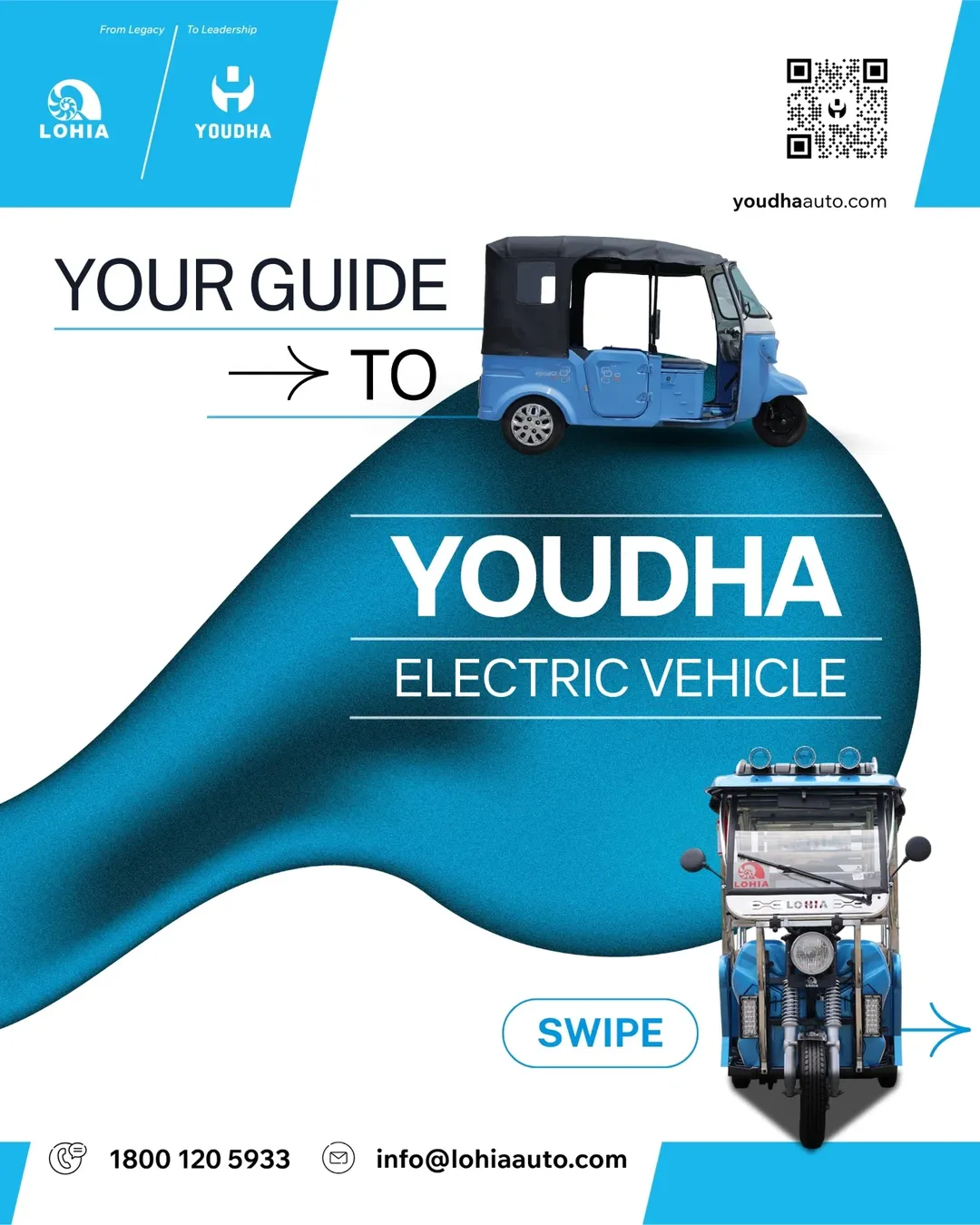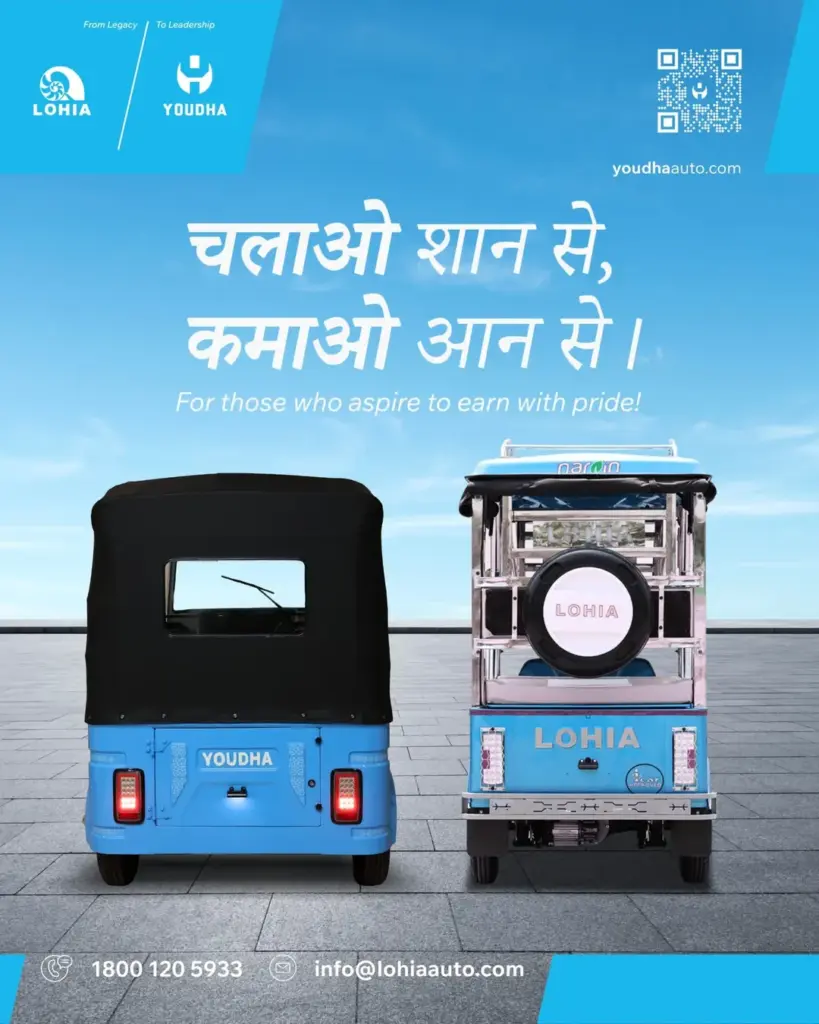In September 2025, India’s GST regime underwent a major overhaul. One of the most watched areas of change was how electric vehicles (EVs) would fare under the new tax structure. The result has been widely welcomed across the EV industry: EVs will continue to enjoy a concessional 5 percent GST rate under the revised slabs.
This decision sends a clear signal from government policy: clean mobility remains a priority. In this blog, we unpack the key elements of the new GST rules, why they matter for EV buyers and manufacturers, and how Youdha is positioned to make the most of this moment.
What Changed Under GST 2.0
Prior to the reform, India’s GST system had multiple tax slabs (0, 5, 12, 18, 28, 40) plus additional cesses on certain goods. With the 56th GST Council meeting, the structure has been simplified to these core slabs: 0 percent, 5 percent, 18 percent, and 40 percent.
In this new regime:
– Electric vehicles continue to be taxed at 5 percent GST, without additional cess.
– Most internal combustion engine (ICE) vehicles have been shifted to higher slabs, many now fall under 18 percent, and luxury or large vehicles may go to 40 percent.
– Some proposals suggest that high-end EVs priced in premium bands could see their tax rates move toward 18 percent or higher.
– Not all elements in the EV ecosystem got the same benefit. For example, swappable batteries and charging services are currently taxed at 18 percent, not 5 percent.
In short, the new GST 2.0 regime preserves the favorable treatment for EVs, while rebalancing taxation on conventional vehicles and select goods.
Why This Matters for the EV Industry
1. Maintained Price Advantage for EVs
By keeping EVs at 5 percent GST, the government ensures that electric models remain more competitive compared to ICE vehicles. For buyers, this means a lower cost of purchase and continued incentive to shift to clean mobility.
2. Stronger Market Confidence
With the GST Council formally deciding to continue the 5 percent rate, manufacturers and consumers gain confidence that EVs will not be penalized. That encourages investments in EV design, production, and charging infrastructure.
3. Pressure to Rationalize the Ecosystem
While EVs themselves benefit from 5 percent GST, the higher 18 percent rate on swappable batteries and charging services creates an inconsistency. Industry stakeholders are pushing for harmonization.
4. Room for Differentiated EV Taxation
The proposal to tax premium EVs at higher slabs reflects a move to balance equitable taxation.
5. Stimulus for Local Manufacturing
Lower and stable tax rates help domestic EV manufacturers plan with certainty and scale production.
Real-World Actions After the GST Decision
– Auto brands across India are adjusting ex-showroom prices to reflect the new GST slabs.
– The EV sector’s continued retention at 5 percent helps maintain its current growth trajectory even as some ICE vehicles get tax relief.
Benefits for EV Buyers, Fleets, and Businesses
– Lower Upfront Cost: Buying an EV under the 5 percent GST keeps purchase prices accessible.
– Reduced Total Cost of Ownership: Lower base prices mean reduced insurance valuations and registration costs.
– Better Predictability and Planning: Stable tax policy helps fleet operators plan confidently.
– Incentive for Electrified Fleets: Businesses that rely on three-wheelers and delivery vans gain added incentive to electrify.
– Encouragement for Infrastructure Growth: Greater EV adoption drives demand for charging and swapping infrastructure.
Why This Matters for Youdha
1. Sustained Affordability: With EVs continuing at 5 percent GST, Youdha’s range of electric three-wheelers remain cost-competitive.
2. Scalable Business Models: Policy clarity allows Youdha to scale production and expand service networks.
3. Fleet & Logistics Advantage: GST benefits strengthen the business case for converting ICE fleets to Youdha EVs.
4. Advocacy for Full Ecosystem Reform: Youdha supports rationalizing GST on batteries and charging services.
5. Customer-first Transparency: Youdha pledges to pass tax benefits directly to customers with no hidden costs.
Looking Ahead
The new GST regime affirmed that India remains serious about encouraging clean mobility. The decision to retain 5 percent GST for EVs provides stability and confidence for manufacturers, fleet owners, and individual buyers. In future rounds, adjustments in ecosystem taxation or differentiated slabs may emerge, but the foundation is strong.
For India’s EV transition to accelerate, policy support must keep pace with technology and infrastructure. Youdha is ready to play its part by developing efficient EV solutions, expanding its service reach, and pushing for tax rationalization across the EV value chain.
If you are considering electrifying your fleet or want to switch to cleaner logistics, now is the time to act. Reach out to the Youdha team and let us help you ride into the future of sustainable mobility.





